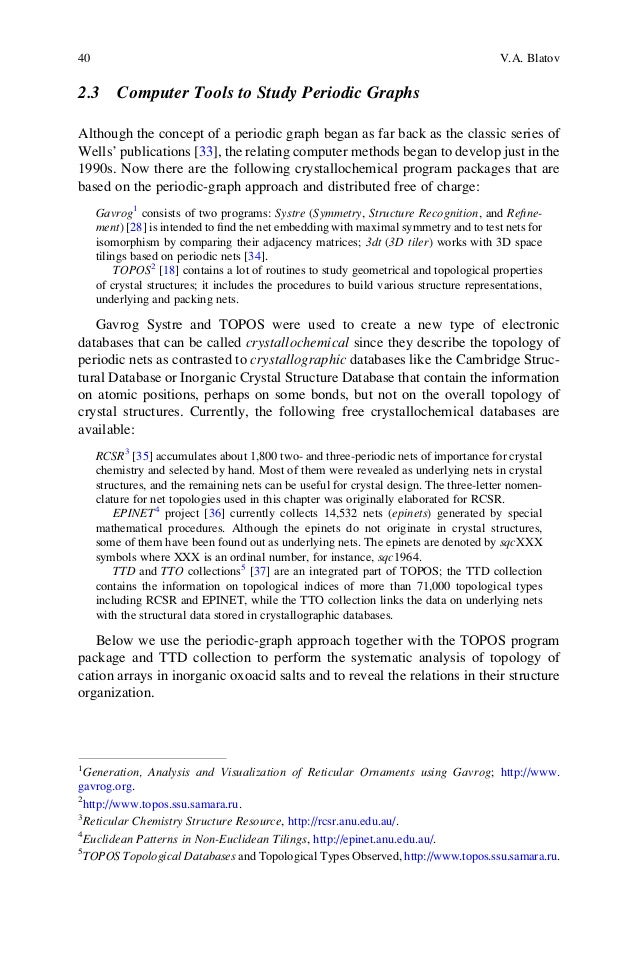Inorganic Crystal Structure Database

• Check it to expand the submenu of About, uncheck to hide the submenu.' Show submenu hide submenu • about-col-one • General • • • • • Access • • • • about-col-two • Engage with the Libraries • • • • • • • Check it to expand the submenu of UsingTheLibrary, uncheck to hide the submenu.' Show submenu hide submenu • inlib-col-one • General • • • • • inlib-col-two • Technology & equipment • • • • • inlib-col-three • Spaces • • • • • • • • Can't find it here? • • • Check it to expand the submenu of People, uncheck to hide the submenu.' Show submenu hide submenu • ppl-col-one • General • • Help. • • • And with.
• • • • • • ppl-col-two • Contact us about. • • • • • • • • • • ppl-col-three • More services • • • Check it to expand the submenu of Research and teaching, uncheck to hide the submenu.' Show submenu hide submenu • randt-col-one • About • • • • • randt-col-two • Teaching & learning services • • • • • • • randt-col-three • Digital scholarship • • • • • Check it to expand the submenu of Collections, uncheck to hide the submenu.' Show submenu hide submenu • coll-col-one • General • • Search • • • • • Requests • • • coll-col-two • Notable resources • • • • • • • Check it to expand the submenu of QuickLinks, uncheck to hide the submenu.'
Welcome to the Inorganic Crystal Structure Database. Copying or publishing either the ICSD data or software without written permission is illegal.
Show submenu hide submenu • tools-col-one • General • • • • • • • • tools-col-two • • • • •. Torrent Photoscore Ultimate 7 Windows. Description The Inorganic Crystal Structure Database (ICSD) is a database of the crystal structures of inorganic substances, including pure elements, metals, minerals, and other purely inorganic substances. No organic or organometallic substances appear; data for these types of molecules can be found in the Cambridge Structural Database. There are currently over 156,000 entries in ICSD (). Bd Young Strawberry Torrent. How Do I Search? • Enter ICSD by visiting.
You will need to log in with your PennKey and password for this resource even if you are on campus. • In the Navigation menu on the left side of the screen, click on the Chemistry option under Advanced Search and Retrieve. • Under Composition, enter the formula of the inorganic oxide or other substance that you wish to retrieve. Be sure to put a space between the elements in your formula. Under Number of Elements, indicate the number of elements that you will permit in your substance.
• Click on the Run Query button to the right to run your search. How Do I Interpret My Results The results will be presented as a list of substances that have published crystal structures.
Kenmore Chest Freezer Model 19502 Manual. The default presentation for this list is the Brief View, which includes the substance's ICSD accession number, the HMS, the structural formula and type of crystal, and information about the document in which the structure was published. You will see a blue star beside every entry that is deemed to be, and each entry ends in a little computer disk icon that you can click to download the.cif file. Check the boxes beside any of the results that particularly interest you. In the left-most column, an option will open in the Navigation section to allow you to get a Detailed View of all the substances that you've checked. This gives you much more detailed information, including the ability to examine the individal bond lengths and angles in the unit cell.
ICSD is the world’s largest database for fully identified inorganic crystal structures. It is produced by FIZ Karlsruhe and currently contains about 193,000 crystal structures. Updates are made twice a year (in spring and in fall) with data taken from scientific journals and other sources. Thanks to these many heterogeneous data sources the database has a wide coverage.
ICSD is also updated retroactively. As all steps of the value generation chain – looking for sources, database production, data management – are performed here at FIZ Karlsruhe, we can always meet and maintain our high standards as to the reliability of the data. About 4,000 structures are added to ICSD each year. The oldest records date back to the year 1913 and contain information from publications. ICSD – an indispensable source of reference and the basis for inorganic crystallography and materials research ICSD interface offers its users a modern, easy-to-use interface and state-of-the-art search options.